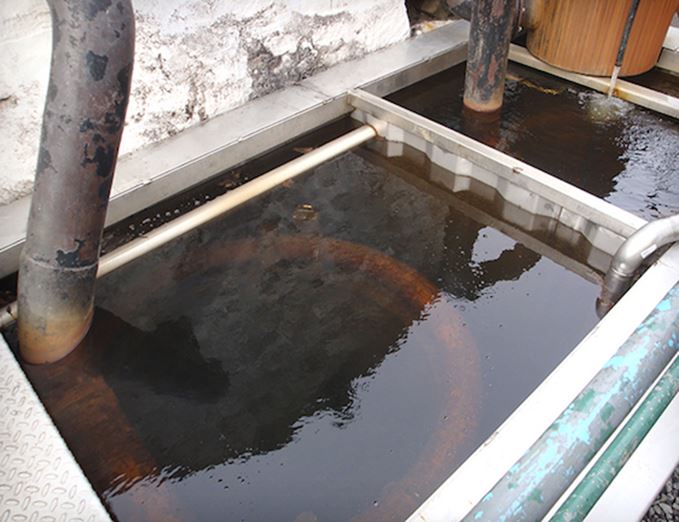While it has doesn't quite enjoy the popularity of it's cousin Port Ellen, at least in Australia, Brora distillery still has quite the cult following in the whisky world. Like Port Ellen, it closed in 1983, and a few rare & expensive bottlings have since been released by current owners Diageo as part of their annual 'special releases' range. Aside from that, the specifics of Brora's history are still the subject of contention between aficionados, so I'm going to try and avoid most of the confusion and stick to the main points. That doesn't make it a short story though, there's quite a bit of history to cover!
The distillery opened in 1819 in the town of Brora, in the Northern Highlands of Scotland, but it was actually named Clynelish. Sound familiar? The distillery currently known as Clynelish opened in the late 1960's, as the much larger replacement for the original across the road, and was needed due to the high demand from blenders at the time (there were very few single malts bottled at this point). Both were owned by Distillers Company Limited, or DCL, which then became United Distillers, which then became part of Diageo.
The original distillery was shut down in 1968, and it's replacement began operating soon after, although this is one of those points of contention. But the original Clynelish may have never been heard from again, and Brora distillery may never have existed, without a little unintentional help from our favourite Hebridean island of Islay.
The original distillery was shut down in 1968, and it's replacement began operating soon after, although this is one of those points of contention. But the original Clynelish may have never been heard from again, and Brora distillery may never have existed, without a little unintentional help from our favourite Hebridean island of Islay.
Original Clynelish/Brora in foreground, with 'new' Clynelish across the road.
Thanks to www.scotchmaltwhisky.co.uk for the image.
There was also high demand for heavily peated whisky from the aforementioned blenders, but Islay was suffering from a drought at the time, and struggled to meet requirements. The answer was to begin producing heavily peated whisky on the Scottish mainland, where the environmental problems were not an issue. Luckily, there was an empty distillery in the Highlands that could help fill the void. The original Clynelish distillery was revived and renamed as Brora (after it's namesake town), across the road from the new Clynelish, and began producing heavily peated malt.
But within a few years the demand for it's heavily peated malt dropped, and Lagavulin, Caol Ila and Port Ellen had ramped up production. So aside from a few mysterious batches, the distillery switched to producing a lightly-peated Highland style malt in the mid-late 1970's. Then with the whisky slump in the late 70's and 80's, the distillery was finally mothballed during the dark times of 1983, after just 14 years of operations. There have been a couple of attempts to resuscitate it since, and the buildings are still in place. It doesn't look very promising, but who knows what the future holds?
This particular Brora is from Gordon & MacPhail's 'Rare Old' series, and like the Port Ellen I reviewed recently, it was bottled at 46%, without chill filtration or added colouring. It was distilled in 1978, so it's likely to be a more lightly-peated example, even more so thanks to 35 years of maturation! It's near impossible to find outside of auction, but I purchased my sample here, and it's still showing in stock at the time of writing. So if you're interested, I suggest you move quickly!
Brora 35 yo, Gordon & MacPhail bottling, 46%. Highlands, Scotland.
Distilled 1978, bottled 2013. Batch / Lot RO/13/05. Non-chill filtered, natural colour.
Colour: Copper.
Nose: Full & quite fruity initially. Sour papaya, aniseed, stewed plums. Straw / hay, gravy powder, hint of sherry behind. Old leather-bound books, bitter marmalade, grease. Both engine grease and cooking grease, in fact. Very dynamic and engaging.
Texture: Quite thick, but not overly heavy. No heat at all.
Taste: Well balanced and complex. Meaty & savoury. Woody spices - clove, allspice, light aniseed. Struck matches, smoked & salted pork, oak. More marmalade, and a tiny hint of dry, soft peat.
Finish: Long & balanced. Semi-sweet milk chocolate, orange peel, sweet oak again. Smoked meats, resin, salted roasted nuts. Leather, waxy fruits, dusty barley. Hint of hot ash as well.
Score: 4 out of 5.
Notes: Very complex, but balanced and quite challenging, nothing really jumps out as the main note here. But it's certainly savoury overall. Certainly quite different to anything else I've tried recently, as far as I can remember, but I'm diggin' it. I just wish I had more of it, so we could get to know each other better!
It's hard to know if this is indicative of a typical Brora, seeing as it was my first, and seeing as it's an independent bottling. But if it is, colour me impressed. Now to find a heavily peated example! But it'll have to be a sample, these are all too rich for my blood. But as always, an independent bottling, particularly from a closed distillery, is the most economical way to explore the rarer whiskies. And this Brora is a winner.
Cheers!









